







Knowing how to keep weeds out of the garden is something most of us would like to do, weeds compete for nutrients, can crowd out your vegetable plants, and can quickly become an unruly problem taking over the garden. These weed management strategies will help.

Most of us want to spend time in our garden beds harvesting crops and enjoying the growing process, not down on hands and knees, spending hours on end pulling weeds.
It’s especially frustrating when you’ve spent hours in early Spring preparing your garden, being so careful to avoid the most common gardening mistakes, maybe even starting your seeds indoors, designing an old-fashioned cottage garden, or building that amazing DIY bean tunnel or hoop house.
Utilizing these weed management strategies is really going to be the key to reducing your weeds over time, avoiding garden overwhelm, and allowing you more time to spend on what you love.
This post has been updated multiple times as we’re passionate about sharing the tools we’ve learned to reduce stress in the garden and help people stop working so hard for their harvest!
Watch the multiple videos below to see both our early strategies for weed management and how we implemented weed maintenance.
Stop Working So Hard in Your Garden (These Hacks Make Gardening WAY Easier!)
Strategies for Weed Management
Weed Management Mid-Summer Update
In our second year of gardening on our homestead, using the weed management strategies listed, we have reduced our weed pressure by about 70-75% (even up to 90% in certain areas) from this time last year without the use of pre-emergent herbicides or weed killers.
Weeds will always be a part of gardening (unless you’re using chemicals, which we don’t advise), I don’t know a single organic weed free garden, but the amount of weeds is completely in your control.
What are Weeds?
A weed is anything you don’t want in your garden, something that doesn’t belong, is in the way or is competition for resources. You may be trying to get rid of grass in your garden.
But something people often don’t think of is that every plant has a value and a purpose in the natural cycle. Sometimes you may be able to use them to your benefit, or use them as you’re managing them.
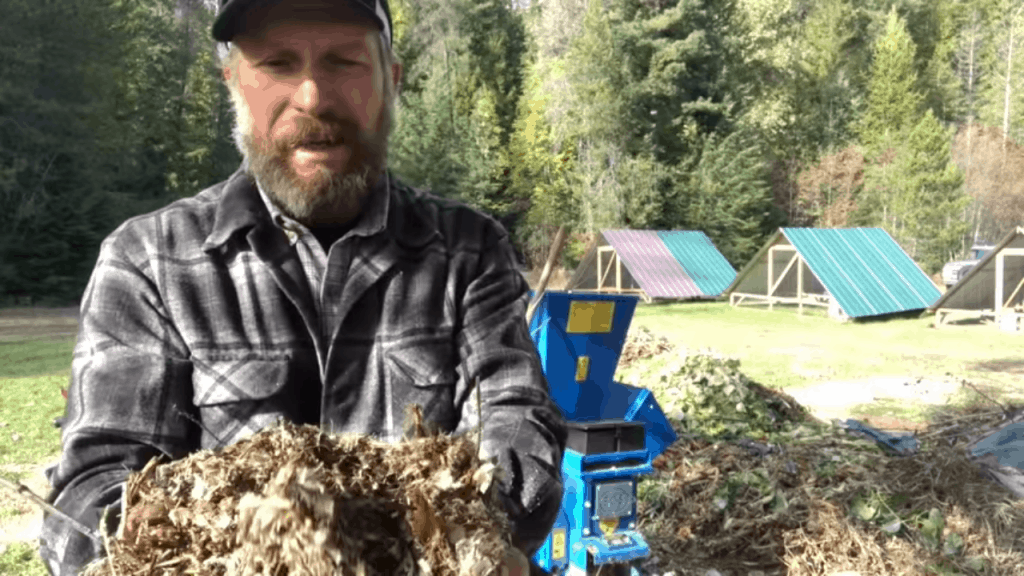
Soil Management & Mulch
By building up good healthy soil that retains moisture and is covered in a layer of mulch, you can actually reduce the number of weeds that you battle each season. We spend a good bit of time in the late fall preparing our garden for winter by building up the soil with organic mulches we make on our property from wood chips, pine needles, and shredded leaves (click that link to watch the video and read how!).
Stop Tilling Your Soil
Every time you turn or disturb the ground over (whether plowing, tilling, or raking deeply) you’re stirring up dormant weed seeds. If these seeds are brought up to the surface, they’re likely going to receive everything they need to germinate and grow. So we want to keep any dormant seeds at least a few inches deep.
Weeds were actually designed in nature to build up the health and quality of the soil. As these annual weeds grow up and die back each year, the plant matter decays and creates a very good rich soil after a few years.
However, in an annual vegetable garden, this isn’t usually something we want to allow to happen as the weeds compete for space and resources. That’s why we use a no-till method. Read this post to see if no-till gardening is right for your situation.
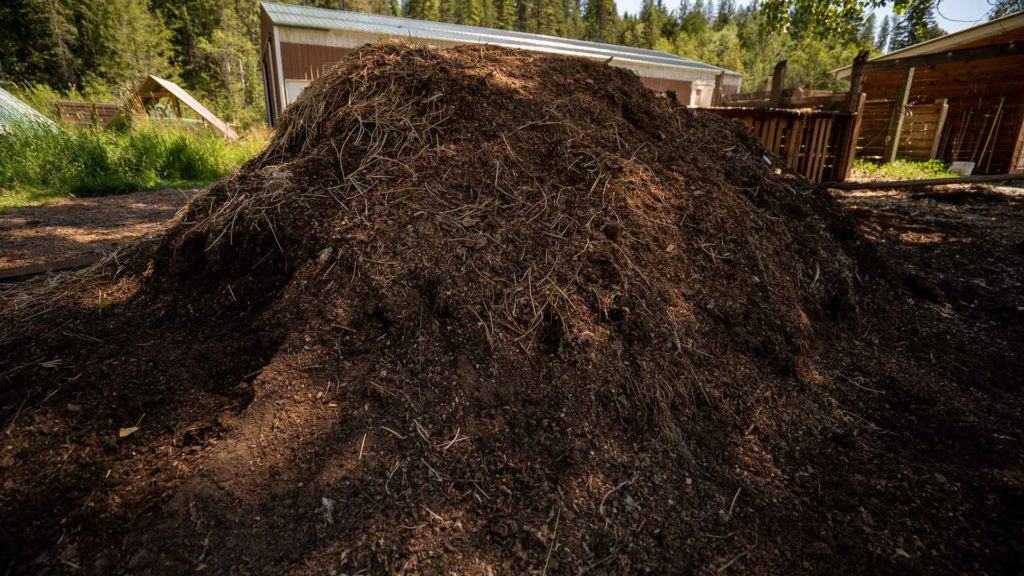
Build Up Healthy Soil
Once you’ve stopped tilling, you may wonder how you’re going to be able to build up healthy soil without being able to work in compost, manure, and minerals. We like to use the lasagna method of gardening, which is building up soil tilth by adding layers of good organic materials.
Soil tilth is the condition of your soil (whether healthy or depleted). Your soil tilth will directly impact your garden’s suitability for planting or growing a crop.
This is determined by the organic matter and particles within your soil, as well as how compact your soil is (aeration), moisture content, the biodiversity within your soil, and how well your soil absorbs and drains water.
When you have good soil tilth, plucking up weeds when they’re small is extremely quick and easy as the soil is soft and pliable.

Use Landscape Fabric or Black Plastic
As you can see, we have a layer of black landscaping fabric going through the pathways in our garden. This is to help minimize the weeds that grow up on the exterior spaces that might infiltrate our garden beds.
This isn’t always necessary, especially if you’ll be spending plenty of time walking the pathways keeping the path well worn, but if your goal is to not spend as much time in your garden, this fabric can really help prevent weeds in those areas.
Get In Your Garden Every Day
It’s easy to let your garden go on auto-pilot once your seeds are in the ground. But it’s really important to get out into the garden every single day with your feet, your eyes and your hands.
This will help you observe the garden to spot any new weeds as they pop up. Weeds are so much easier to pluck when they’re small.
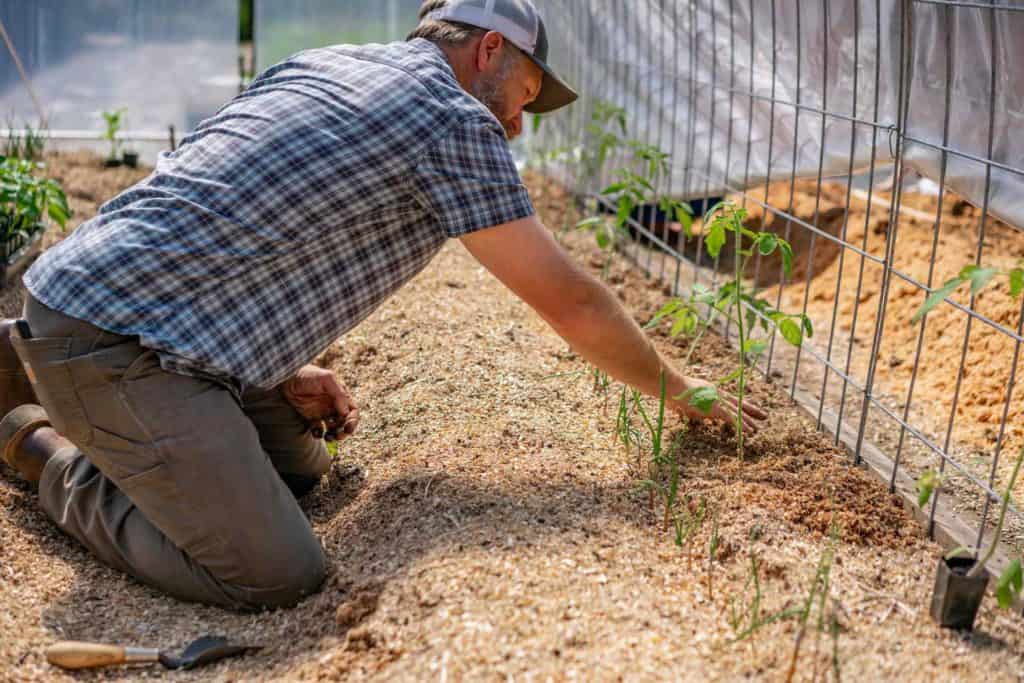
Pull Weeds By Hand When They’re Small
One of the quickest and easiest ways to eliminate weeds in the garden is to pull them up when they’re small. They won’t have time to go to seed or to build up a strong root system that may interfere with other crops.
Sure, this still means you’re weeding, but you can cover a whole lot more surface area by weeding when the weeds are small, than allowing them to grow up and establish strong roots.
I do this every single day in the garden, simply pulling up any weeds I see and dropping them in the pathway. Because I’m out here daily, I don’t worry about the weeds re-rooting as they’ll be trampled and composted into the path.
Hula Hoe or Stirrup Hoe
It’s important to note that these tips are coming from a lasagna gardening mindset where the garden will be heavily mulched to protect the soil and minimize weeds.
If you’re working with a large garden area that hasn’t been mulched, these methods may prove more difficult for keeping weeds out of the garden.
In that case, there are times when something like a hula hoe or a stirrup hoe can come in handy. This is one of my favorite garden tools, and works well in areas like walkways where disturbing the ground isn’t as big of a deal.
Chop & Drop
If you’re working with a large garden that’s not currently mulched and you’re wanting to work toward a lasagna garden method, then doing what we call a “chop and drop” of your weeds can give you a jump start in this process.
Use what nature is already giving you and turn those weeds into mulch by chopping them just above the ground and letting them die on top of the soil.
Later in the season, you can then add more mulch to the surface to prevent any more weeds from growing up, continuing to add layers as you’re able. (See our blog post on lasagna gardening for more tips.)
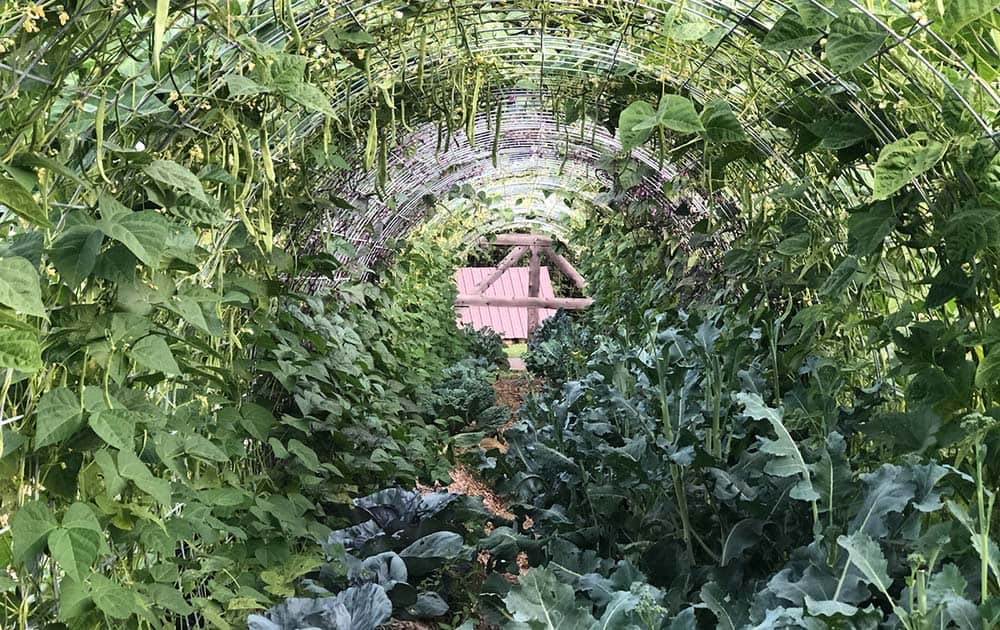
Companion Planting
A great method to utilize in order to plant very densely is companion planting. In the video update above, we show how we plant three rows of carrots and in between the rows, have planted cilantro and spinach.
Planting this densely will mean the weeds need to compete for space. If you can catch the weeds early and pull them up, then as your crops grow in, they will edge out any new weeds that will try to grow up later in the season.

Cover Crop
If you have areas of your garden that you don’t plan on utilizing for growing food, you may want to consider planting a cover crop. This is something that will grow up and die back and actually improve your soil for next year.
By not leaving the ground bare, you’re eliminating potential weeds that might grow up throughout the year, dropping their seeds to become a problem for years to come.
Cultivation
Another method of weed control is to use cultivation. We do very little cultivation because of our gardening practices and cultivation disturbs the soil much more than we’d like.
Once the weeds really take root, pulling them up will disturb your soil more than is healthy for your crops.
Sometimes using a hula hoe will work, but if the weeds are right up next to your crops, you may want to chop and drop the weeds with scissors to avoid accidentally damaging your plants.
Once chopped, you can then let the weeds decompose in the pathways, or add them to your compost pile to break down.
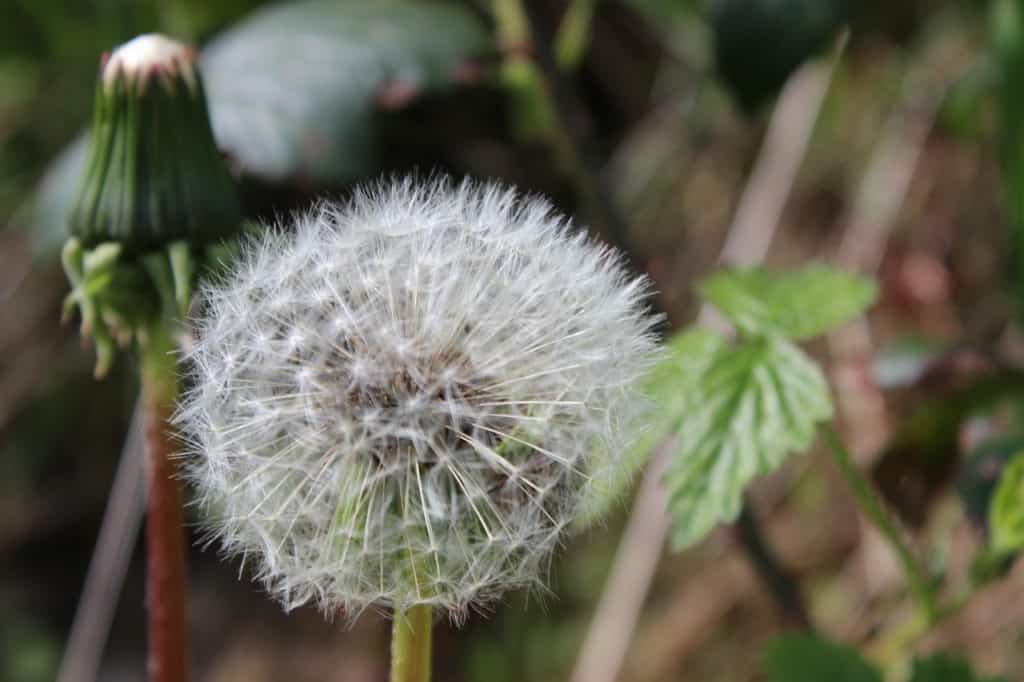
Don’t Allow Weeds to Go To Seed
One of the most important things for keeping weeds out of the garden and under control is to take care of the weed before it goes to seed. If just one single weed goes to seed you can be fighting that weed for many years to come.
Use whatever means you can to keep the weeds from going to seed. As mentioned, plucking the weeds when they’re small is the easiest. But if you don’t catch them when they’re small, you can always chop and drop to keep the weeds from flowering.
Over time, using the methods above, the weed seeds will get further down in the soil where they won’t have the ideal conditions to germinate and grow.
As long as you’re keeping the new weeds from going to seed, this will keep that seed bank low and manageable.

Weeds Can Be Useful!
In the end, remember that many weeds actually have good uses and we can utilize the ones that are edible or medicinal! We have a cottage garden filled with herbs and, what some people might call weeds! Here is a list of 15 medicinal herbs we grow in our garden, check to see if any might be growing in yours!
More Gardening Related Posts
- Crop Rotation in a Vegetable Garden
- Spring Garden Planning Tips & Tricks
- Our Farm Watering System at Riverbend
- Get a Jump Start on Early Spring Gardening
- How to Build a DIY Hoop House (Greenhouse)
- How to Make Compost the Easy Way – Composting 101
- When and How Often to Turn Compost
- Home Composting (Troubleshooting & FAQ’s)
- When to Start Seeds Indoors
- Seed Starting Problems (& How to Fix Them)
- 12 Things You Must do to Prep the Garden for Winter
- 20 Vegetables You Can Plant in Late Summer
- Get an Instant Garden (Vertical Garden Planter)
- Making Raised Garden Bed Rows & Super-Charging Your Soil


















